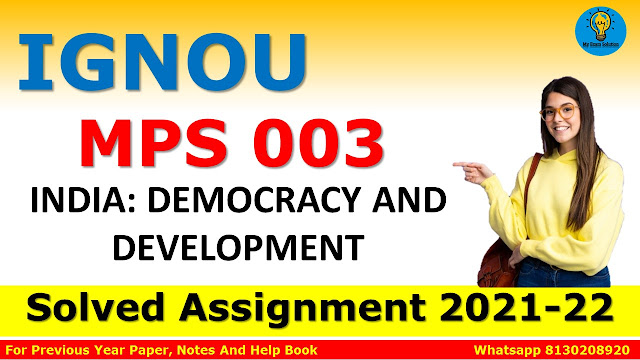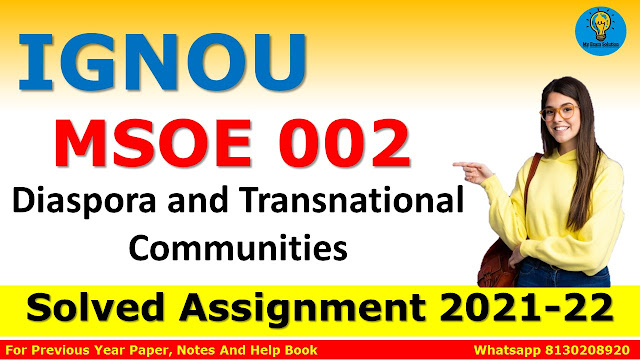The cohesive and conflict dimensions of religion in India
India is characterized by more ethnic and religious groups than most other countries of the world. Aside
from the much noted 2000-odd castes, there are eight "major" religions, 15-odd languages spoken in
various dialects in 22 states and nine union territories, and a substantial number of tribes and sects.
Three ethnic or religious conflicts have stood out of late: two occurred in the states of "Assam and Punjab;
another, the more widely known Hindu-Muslim conflict, continues to persist. The Assam problem is
primarily ethnic, the Punjab problem is based on both religious and regional conflicts, while the HinduMuslim problem is predominantly religious.
ETHNIC CONFLICT IN ASSAM
The three conflicts mentioned, Assam has attracted the largest attention of late. Not since the 1947
partition of India have so many people been killed and uprooted as a result of ethnic or communal
violence. By most available reports now, mob violence has claimed four thousand lives, rendered about
200,000 homeless, and forced a large number to leave the state for protection elsewhere. The immediate
occasion of this bloodshed was the election held in February, though conflict and tension have been
present for the last three years. In Assam, three culturally disparate groups have been in collision: the
Assamese, the Bengalis (both of which have segments of Hindus and Muslims) and the tribals, which are
localized communities.
Historical Pattern of Migration
Assam has had the highest rate of population growth in India since the beginning of this century.
Migration into the state accounts for a substantial part of this growth. Most migrants came from Bengal,
including what is now Bangladesh (known as East Bengal before the 1947 partition and East Pakistan
from 1947-71). Bengali migrants were both Hindus and Muslims. Bengali Hindus started arriving after the
British created tea plantations in the middle of the nineteenth century. Because of their educational
advantage over Assamese, they were better suited to man the growing administrative and professional
machinery.
Bengali Muslims on the other hand, were mainly peasants. They originated predominantly in East Bengal,
a highly populated area with low agricultural productivity and a fragmented landholding pattern
incapable of supporting large families. In contrast, Assam was less populated, many areas were unsettled,
and there was less pressure on the land. Bengali peasants made large tracts of waste, flooded and
forested land habitable and productive along the southern bank of the Brahmaputra River, an area that
is also populated by indigenous tribal groups, especially the Lalung.
Overall Bengali dominance began to manifested itself in various ways. They held urban professions, their
language was more developed and widely used in Assam, and their educational and even numerical
superiority became more than evident. With the halting spread of education in the twentieth century,
the Assamese middle class slowly emerged, and with the growth of the Assamese middle class, the seeds
of what has been called "little nationalism" were sown in Assam.
Post-Independence Developments
After the partition of 1947 and the transfer of a very large Bengali Muslim district of Sylhet to East
Pakistan, the Assamese middle class came to power for the first time in about a century. Through
expanded educational programs and the use of Assamese as a language in the university, this newly
acquired power, electorally buttressed, was used to consolidate the position of the Assamese middle
class against Bengali dominance in administrative services and professions.
On the other hand, the various tribes on the lower ranges were less developed than both of these
contending communities. Depending on the preponderance of one or the other in their local context,
they felt pressured, even exploited, culturally, economically and politically by both groups.
Despite the existence of an international border, the migration from East Pakistan continued alongside
migration from West Bengal. There is considerable dispute over the actual magnitude, but the most
comprehensive estimate shows that between 1961 and 1971 the proportion of Assamese declined for
the first time and that of Bengali speakers increased; between 1971 and 1981 itself, as many as 1.2 million
migrants were added to a population of 14.6 million in 1971. Moreover, the number of registered voters
increased dramatically from 6.5 million in 1972 to 8.7 million in 1979, a rise which cannot be totally
attributed to the coming of voting age to the previously ineligible. This last discovery of the Election
Commission was, in fact, the starting point of the present phase of the organized student movement
supported by large sections of the Assamese middle class. The movement has wide-ranging demands
including development of Assam and greater share of benefits from its rich national resources, including
oil, for the Assamese.
Why the issue of deportation of "illegal aliens" has come to be the focus of the
movement needs some explanation.
Despite the general anti-Bengali sentiment, the expulsion of migrants that came from West Bengal -these
migrants are predominantly Hindus - could not be brought about legally or politically. Interstate
movement and residence are perfectly legal in India, and the Assamese economy and society, despite
the antagonism, is inextricably linked with West Bengal.
On the other hand, the "post-1947 place of origin" of migrants from Bangladesh, largely Muslim, makes
them "aliens" and their migration, for political purposes, can be called "illegal." The students thus found
a ground for demanding their expulsion. Additionally, these Muslim migrants provided unstinted support to the Congress Party, now represented by Mrs. Gandhi, and the party in turn patronized them, so much
so that local politicians of the Congress Party seem to have put aliens on the electoral rolls irrespective
of whether or not they had Indian citizenship.















